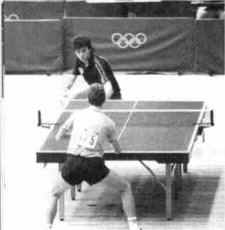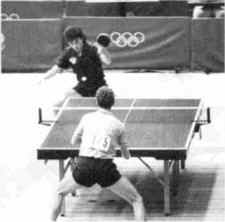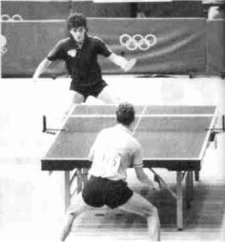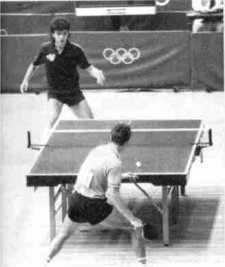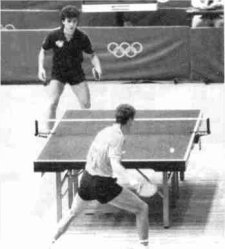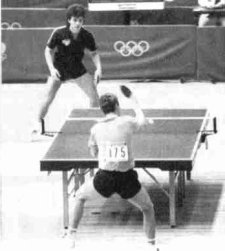|
|
||||||||
|
|
||||||||
|
|
FOREHAND RE-TOPSPINSDimosthenis E. Messinis Ph.D. The following is a part from the book Table
Tennis: From A to Z Forehand re-topspin over the table The offensive players use this stroke in order to make a quick return of a forehand or a backhand topspin. It demands a high level of technical knowledge and neuromuscular coordination. The ŌĆ£keyŌĆØ for the proper execution of this stroke is the right bat slope and the good timing during the contact.
The ideal position for the execution of this stroke is 40-50 cm away from the table. The position of the body is similar with the basic stance. As the ball comes, the player turns slightly to the right and brings the bat a little lower than the waist height (fig. a-d). The hand is slightly bend. From this position starts the front counterclockwise movement of the right hand. The contact of the bat with the upper part of the ball take part in the beginning of the rise after its bounce (fig. e,f). The angle of the bat with the table at the time of contact is about 50o. The body weight is in front helping on the stroke execution. The whole movement executed quickly. Forehand re-topspin away from the table This stroke is used when the player is away from the table (about 3-4 m) and he wants to counter a forehand or a backhand topspin. It is a difficult stroke because it demands sense of the free space, neuromuscular coordination, technical knowledge and good timing. The position of the body is about the same with that of fast forehand topspin. The legs are bend and open wider than the shoulder width while the right hand is slightly bend. As the ball comes, the player with the left leg as a rotation axis, turns his body to the right and throw the body weight to the right leg. The right arm stretches and the bat is behind and below from the height of the right knee. From this position starts the front counterclockwise movement of the right arm, as in the fast forehand topspin, with the difference that the bat slope is greater and the arm stops in front of the head below of the eyes height. The contact of the bat with the ball is just after its falling from the highest point of its bounching. The left arm follows tthe body movement and helps to the balance keeping. During the stroke, the body weight is transfered towards in order to help the arm movement. The speed of the arm movement depends on the playing style and the ball speed. Copyright ┬® 1998,1999, by Dimosthenis E. Messinis |
|||||||
|
Last Update : 06 November, 2002 Copyright ┬® 2001-2006 Ertan Patir Webmaster : |

